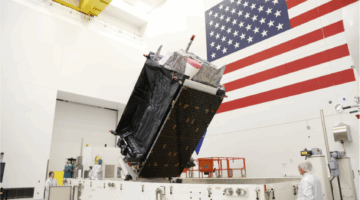
WASHINGTON — With the US on Thursday greenlighting the transfer of F-16 Fighting Falcons from Denmark and the Netherlands to Ukraine, the top US air officer in the region today is warning that the fighter jets won’t arrive in 2023 — and that it could be several years until Ukrainian forces can demonstrate “proficiency” on the platform.
According to Gen. James Hecker, commander of US Air Forces in Europe and Africa, Ukrainian pilots undertaking F-16 training are typically pretty “young” who have “barely any hours at all,” and that many steps lay ahead of them before they’ll be ready to strap in to the Lockheed Martin-made Fighting Falcon.
The pilots first have to undergo language training in the UK, Hecker said, and then after that “they’re going to get a little bit more training on propellers and then go down to France and fly in the [Dassault/Dornier] Alpha Jet for a little bit. That all is going to take time, and that’s probably not going to happen before the end of the year… so that’s why it’s going to be at least until next year until you see F-16s in Ukraine,” he added.
The Washington Post reported August 11 that F-16 training for a first group of six Ukrainian pilots likely wouldn’t wrap up before summer 2024, with the country’s Air Force later confirming that the jets would not be delivered this year as previously hoped.
Hecker, speaking with reporters virtually during a discussion hosted by the Defense Writers Group, echoed previous comments from top officials that the F-16 would help Ukraine meet its military objectives somewhat — pointing to elements like its existing interoperability with weapons being supplied by the West and “added capability” in a fight — but similarly emphasized it would not be a “silver bullet.”
Additionally, Hecker said significant time will be required to build “proficiency” on the F-16, cautioning that it may be several years before Ukraine reaches that point.
“That takes awhile to build a couple squadrons of F-16s, and to get their readiness high enough and their proficiency high enough. I mean you’re talking, this could be four or five years down the road,” he said.
Separately, Hecker said Ukraine’s counteroffensive has seen gains since kicking off in June, but formidable Russian defenses have hampered progress.
“It started off, you know, a little slow. We’ve seen it pick up slightly since then,” he observed. “So it’s definite progress. But it’s slow progress.”
Ukraine’s campaign has been stymied by extensive fortifications deployed by Russia, including dense networks of mines that have to be painstakingly disarmed. The sluggish pace has now seemingly placed the counteroffensive’s key goal in jeopardy, with the Washington Post reporting Thursday that the US intelligence community has assessed that Ukraine won’t reach the city of Melitopol.
Hecker didn’t comment on whether Ukraine would fail to meet its key objectives, but did emphasize that the country’s forces are moving forward. “Of course, all of us would like fast progress. But in a situation like this — this heavily defended and fortified [territory] — it’s very difficult. So, slow progress is good. It’s better than the alternatives.”
Elsewhere in Hecker’s area of responsibility, the general said officials are drawing up plans for evacuating US forces in Niger after a military junta ousted the country’s president, Mohamed Bazoum. Hecker stressed that no decision has been made, which would have to come from political leadership, and that officials are only preparing for all possibilities.
In the event the US has to evacuate, “It obviously will have an effect on our ISR [intelligence, surveillance and reconnaissance] and our ability to continue to do CT [counterterrorism] in that region,” Hecker said.
“But we will obviously look towards some other allies that are in the west there that we could maybe partner up with, and then move our assets there,” he added. “But of course what we hope for is that we have a peaceful diplomatic solution to this and we don’t have to move.”

